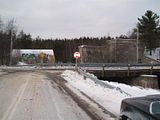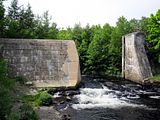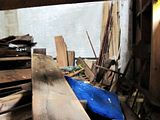Just a quick update today with three photos from downtown Halifax.
This first is Georges Island. I've blogged about Georges several in the past and had the opportunity to visit the island drumlin in June 2008.
Some background on Georges Island...
The island was first fortified in 1750, shortly after Halifax was founded in 1749. During the Acadien Explusion from 1755 through 1763, those facing deportation were kept on the island, which doubled as a prison.
Defenses on the island were strengthened during the American Revolution, throughout the 1790s, and again during the War of 1812 and American Civil War. After 1850, with advances in technology, the fort was again overhauled, building the modern Fort Charlotte on the island.
Georges Island played a small role in Halifax's defense during both World Wars I and II, notably anchoring a submarine net protecting the inner harbour during World War 1 and housing an anti-aircraft unit throughout World War 2. Military service on the island ended with the war and it was declared a National Historic Site of Canada some twenty years later.
Unfortunately, Georges Island is not normally open to the public. Parks Canada continues to work to restore the island to allow public visitation in the future.
Source: Parks Canada - Georges Island National Historic Site of Canada

Nova Scotia Power's relocation to a former Lower Water Street generating station pushes on. The building's exterior appears mostly complete and the interior has some lighting. The power corporation plans to move into this location in the Spring of this year.
The utility boasts that the redeveloped building will reduce it's environmental footprint. The building's list of key features includes (among many others) LEED platinum certification, sea-water heating, rainwater irrigation, and the glass interior, or 'curtain-wall,' designed to maximize natural light.













